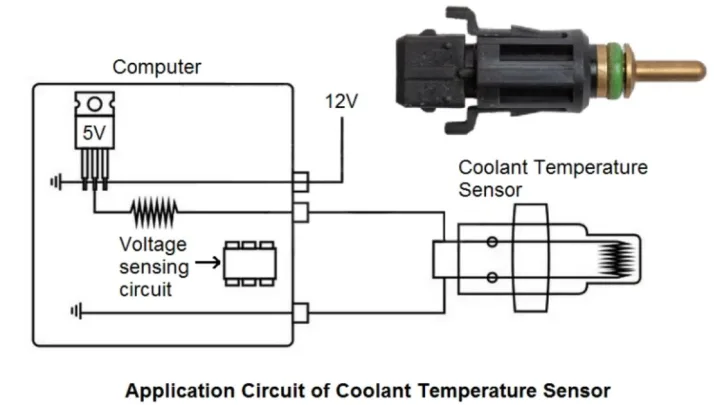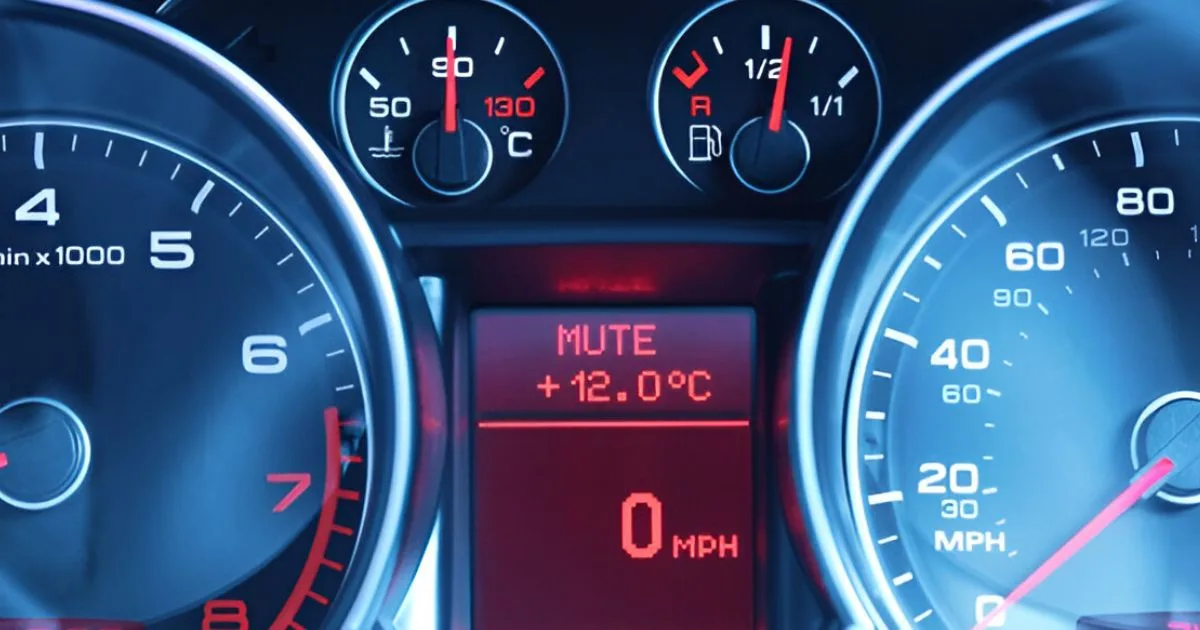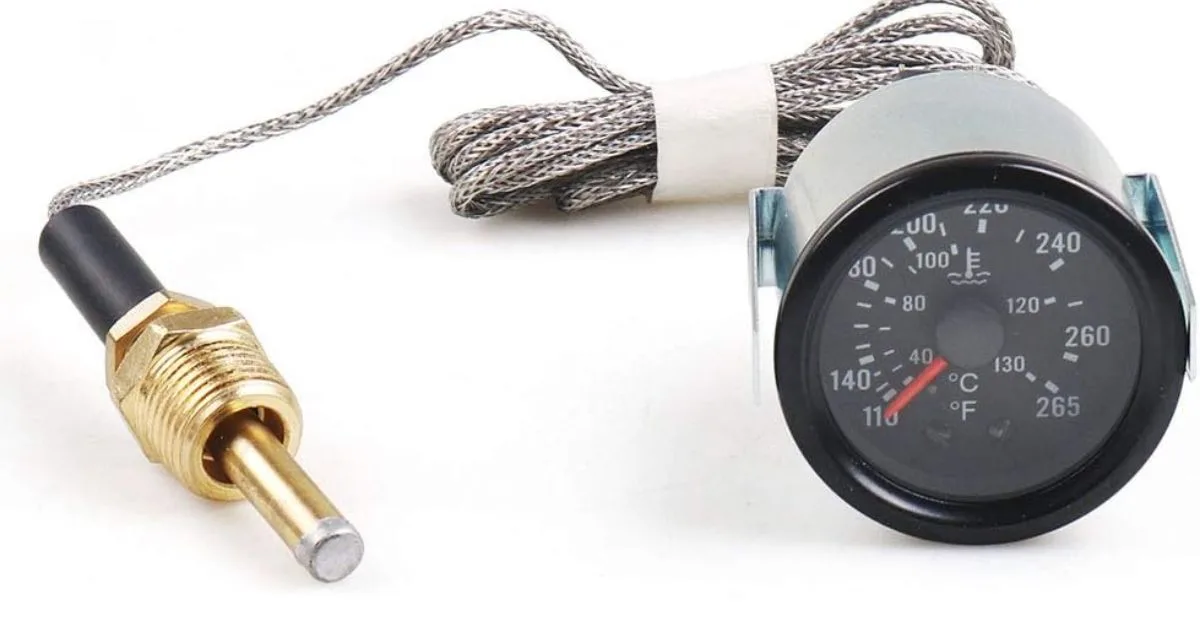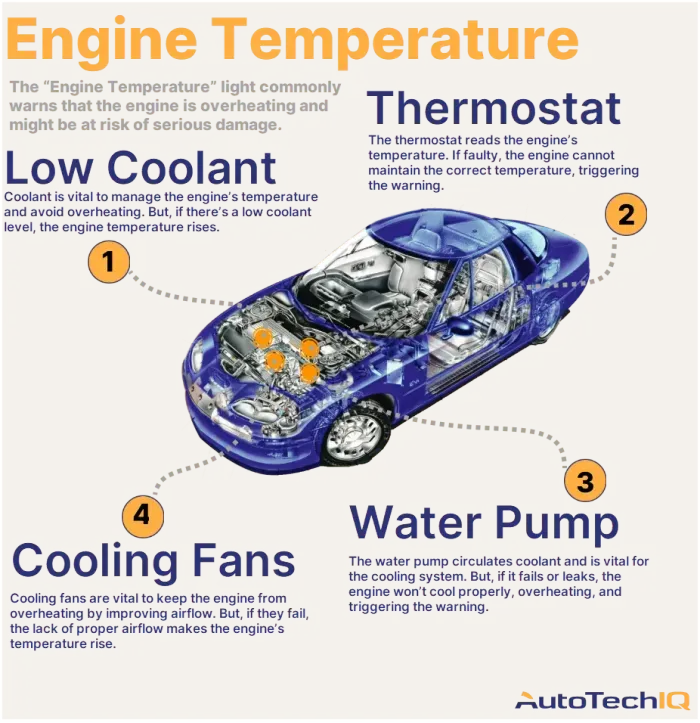
Your car's water temperature meter is essential for monitoring engine heat levels. It helps prevent engine damage due to overheating.
Understanding the role of your car's water temperature gauge is crucial for maintaining the longevity and performance of your engine.
This gauge acts as an early warning system, alerting you to potential issues before they escalate into costly repairs.
Keeping an eye on the water temperature meter can save you from the inconvenience of unexpected breakdowns and the expense of engine repairs.
Regular checks ensure that the cooling system functions properly, maintaining an optimal engine temperature. A stable engine temperature contributes to better fuel efficiency and engine reliability.
Therefore, paying attention to the water temperature meter is not just about preventing damage; it's also about optimizing your vehicle's performance and efficiency.
The Importance Of Water Temp Gauge
The water temp gauge is a key tool for your car's engine. It tracks the engine's heat. This gauge helps prevent damage. Keep reading to learn why it's so important.
A Guardian Of Engine Health
Your car's engine needs the right temperature to run well. The water temp gauge keeps an eye on this. It ensures the engine does not overheat. Overheating can cause serious harm.
Consistent monitoring of the water temp gauge can save your engine. It helps maintain the perfect balance for optimal performance. A healthy engine means a longer life for your car.
Early Warning System
The gauge works as an alert system. It warns you before the engine overheats. This early warning is crucial. It gives you time to react and protect your engine.
- Spot issues early: The gauge can reveal hidden problems.
- Prevent breakdowns: It allows you to take action before damage occurs.
- Save money: Early detection avoids costly repairs.
 How The Water Temp Gauge Works
How The Water Temp Gauge Works
How The Water Temp Gauge Works
Understanding how the Water Temp Gauge works is crucial. This tool checks your car's engine temperature. A healthy engine means a happy car. Let's explore this important feature.
Temperature Monitoring Basics
The water temperature gauge is your car's thermometer. It tells you if your engine is hot or cold. A normal gauge shows a range.
This range is from cold (C) to hot (H). The gauge uses a sensor in your engine. This sensor checks the coolant temperature.
Coolant is a fluid that helps keep your engine cool.
- Sensor detects coolant temperature.
- Gauge displays this temperature on your dashboard.
- A normal reading is usually in the middle of the gauge.
From Cold Start To Operating Temperature
When you start your car, the engine is cold. The gauge needle is near C. As you drive, the engine warms up. The needle moves to the middle.
This middle spot is the operating temperature. It's where your engine runs best. If the needle goes too high, near H, your engine is too hot. This can be bad for your car.
- Start car: Needle near C.
- Engine warms: Needle moves to middle.
- If too hot: Needle near H. This is bad.
Keeping an eye on your water temp gauge helps prevent engine damage. It's a simple tool but very important for your car's health.
Signs Of Overheating And Risks To Your Engine
Car engines need cooling to run right. The water temperature meter tells you if it's too hot. Let's explore signs that your engine might be heading into the danger zone, and what could happen if it does.
Recognizing The Red Zone
Keep an eye on the gauge. When the needle moves towards 'H' or into the red, act fast. This is the red zone. It means your engine is too hot. You might see steam or smell something burning. This is bad.
- Steam from the hood: Means it's too hot.
- Temperature warning light: Also a red flag.
- Hot smell: Burning odors signal danger.
Potential Damage From Overheating
Overheating hurts engines. Metal parts warp. Head gaskets blow. It's costly. Here's what can get damaged:
| Part | Issue |
|---|---|
| Head Gasket | Can blow |
| Engine Block | May crack |
| Cylinders | Could warp |
Stop driving if you see signs of overheating. Let the engine cool down. This saves your car from big problems.

Credit: carfect.com
Optimal Temperature Range For Your Engine
Engines need the right temperature to work well. Your car's water temperature meter is key. It ensures the engine stays within a safe heat range. This helps prevent damage and keeps the car running smoothly.
Why Temperature Matters
Engines like a specific heat range. Too hot, and parts may fail. Too cold, and the engine won't run as it should. The right temperature helps parts move easily and last longer.
Impact On Fuel Efficiency And Emissions
Proper heat means better fuel use. An engine that's too cold uses more fuel. An engine that's too hot can cause higher emissions. Keeping an eye on the temperature gauge helps maintain both.
 Troubleshooting Water Temp Gauge Issues
Troubleshooting Water Temp Gauge Issues
Troubleshooting Water Temp Gauge Issues
Keeping your car's engine healthy is important. One key player is the water temperature gauge. This gauge tells us if the engine is too hot or cold. Let's dive into how to fix it if it stops working.
Common Malfunctions
Several issues can make the gauge act up. Here's a look:
- Stuck needle: The needle doesn't move.
- False readings: The gauge shows wrong temperatures.
- No reading: The gauge shows nothing at all.
Diy Diagnostics
Fixing the gauge yourself? Follow these steps:
- Check the car's manual for gauge info.
- Inspect wires and connections for damage.
- Test the temperature sensor with a multimeter.
- If damaged, replace the sensor or consult a pro.
Note: Always be careful and follow safety steps.
Maintaining Your Cooling System
Your car's water temperature meter signals your engine's health. It's a vital component that monitors your engine's temperature. This gauge helps prevent overheating.
Overheating can cause serious damage to your engine. Keeping your cooling system in top shape is crucial.
Regular Checks And Balances
Regular maintenance is key for a healthy cooling system. Make sure to check coolant levels often. Inspect hoses and belts for signs of wear or leaks.
Replace old coolant as recommended by your car's manufacturer. Use a mixture of water and antifreeze for optimal protection.
- Inspect coolant levels monthly
- Look for hose leaks or damage
- Change coolant based on manufacturer guidelines
When To Seek Professional Help
If you notice any unusual signs, act fast. These signs include temperature spikes, leaks, or steam.
Also, if your car's heater does not work, seek help. Mechanics can diagnose and fix cooling system issues. They ensure your engine stays healthy.
| Sign | Action |
|---|---|
| Temperature Spikes | Visit Mechanic |
| Leaks or Steam | Check Hoses |
| No Heat from Heater | Professional Check |
Innovations In Engine Temperature Monitoring
Engine health is crucial for your car's performance. Innovations in engine temperature monitoring are key.
These advancements ensure engines run at optimal temperatures. This prevents damage and maintains efficiency.
Smart Sensors And Iot
Smart sensors are revolutionizing engine monitoring. These sensors provide real-time data on engine temperature. They alert drivers to potential issues before they escalate.
- Immediate temperature readings
- Warnings for abnormal heat levels
- Wireless data transmission
IoT technology connects these sensors to networks. This allows for remote monitoring. It enables predictive maintenance too.
Future Of Engine Health Management
The future of engine health looks promising. Technology will offer more precise monitoring.
Expect self-diagnosing engines soon. These will adjust to maintain ideal running conditions.
| Technology | Benefits |
|---|---|
| AI Algorithms | Enhanced diagnostics |
| Machine Learning | Adaptive performance adjustments |
Integrated systems will predict failures. They will also extend engine life. This leads to reduced maintenance costs.
Case Studies: When The Water Temp Gauge Saved The Day
Imagine driving without a clue about your engine's heat. Your car's water temp gauge keeps the engine safe. Let's see how this tiny meter became a hero in real-world situations.
Real-life Rescues
Meet John, a taxi driver with a tight schedule. One day, his dashboard lit up, the water temp gauge flashing a warning. He pulled over promptly. A quick check revealed a broken water pump.
Thanks to the gauge, John avoided a costly engine overhaul. His swift action saved not just the engine but his livelihood too.
Lessons Learned
- Regular checks: Keep an eye on the gauge for early signs.
- Immediate action: At any abnormal reading, stop and inspect.
- Know your car: Understand normal gauge readings for your vehicle.
Sarah's story teaches us the same. Her water temp gauge signalled trouble during a road trip. She stopped and called for help. Her engine was running low on coolant.
A refill was all it took. Sarah's timely response turned a potential disaster into a minor hiccup.

Frequently Asked Questions
What Is A Car's Water Temperature Meter?
A car's water temperature meter monitors engine coolant temperature, ensuring the engine operates within safe limits.
How Does Water Temperature Affect Engine Health?
Excessive heat can damage engine components, while low temperatures can lead to inefficient fuel consumption and performance.
Can A Faulty Water Temperature Gauge Cause Problems?
Yes, a malfunctioning gauge may prevent timely detection of overheating, risking serious engine damage.
What Are Signs Of Water Temperature Meter Failure?
Signs include erratic temperature readings, constant high or low readings, and no response from the meter.
Related Post
How to Use a Car Clinometer: Navigate Slopes Safely!
How Does a Car Dynamometer Work: Unveil the Power!
How Does a Car Hydrometer Work: Unveiling Secrets
Step-By-Step: Voltmeter Mastery for Car Battery Checks
What Causes a Car Fuel Gauge to Stay Stuck on Full: Insights
What Causes a Car Odometer to Stop Working: Key Reasons
Conclusion
Monitoring your car's water temperature meter is crucial for engine longevity and performance. It alerts you to potential overheating, preventing costly repairs.
Regular checks ensure your vehicle runs smoothly, safeguarding your investment. Remember, a healthy engine leads to a reliable ride.
Keep an eye on that gauge for peace of mind on the road.
Disclosure
Some links may be affiliate links. That means we may earn a small commission at no extra cost to you.